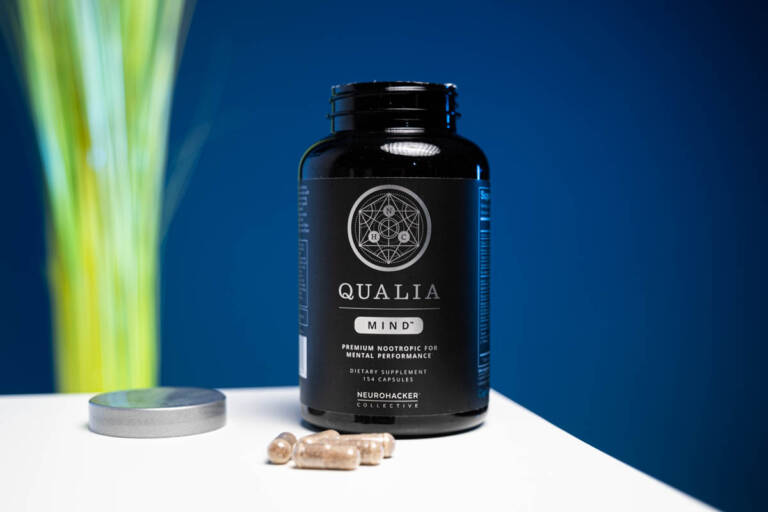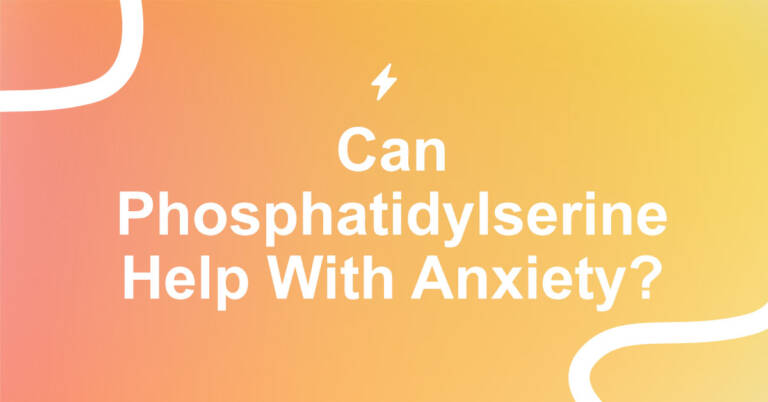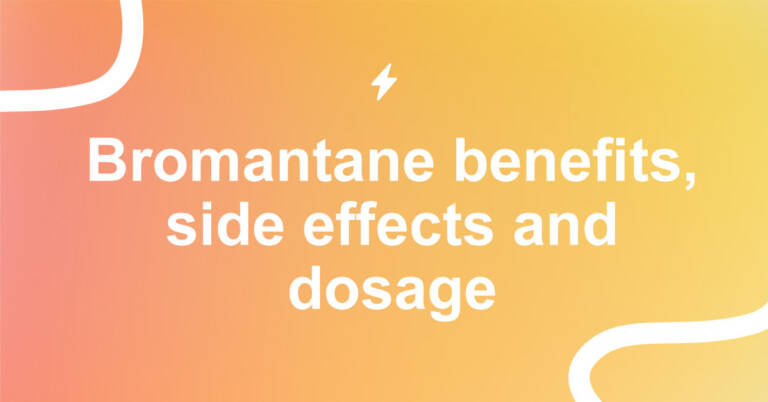Pramiracetam and racetam are two structurally similar nootropics that can enhance cognition. But there are a few important differences between them. So, which racetam is more potent? Read my pramiracetam vs piracetam comparison to find out.

What Is Pramiracetam?
Pramiracetam is a racetam nootropic that was synthesized from piracetam, the first synthetic nootropic ever developed. [*] Pramiracetam was developed in 1979 for patients with brain injuries. Today, it is used as a nootropic because of its many benefits on cognition.
Pramiracetam is currently sold under the brand name Pramistar in the US, but it is illegal for sales in most other countries. We still lack quality clinical trials to confirm its efficacy and safety, especially for the healthy population.
How Does Pramiracetam Work?
Let’s check the mechanisms of pramiracetam before we compare it to piracetam. Here are the currently understood mechanisms of pramiracetam:
- Pramiracetam may increase acetylcholine levels by increasing choline uptake into the cells (through the high-affinity choline uptake system). Increased acetylcholine levels lead to improved memory and learning. [*][*]
- Pramiracetam may impact adrenal hormones like cortisol and aldosterone, making you less stressed and more focused. [*][*]
- Pramiracetam could increase nitric oxide production in the brain, which allows more blood and nutrients to travel to every part of your body [*]
These proposed mechanisms are not yet fully confirmed but are based on the available animal research. We lack high-quality human studies to confirm the mechanisms and the efficacy of pramiracetam.
Pramiracetam Benefits
Studies show that pramiracetam may be an effective and potent nootropic. It may:
- Boost memory
- Help with brain recovery
- Offer neuroprotection
Multiple studies (mainly done in animals) show that pramiracetam is maybe even more effective than piracetam.
For example, a randomized, double-blind placebo-controlled trial of four men with brain injury showed that pramiracetam helped them improve short- and long-term memory. [*]
Another study showed greater memory improvement in volunteers with memory loss and reduced memory. [*][*] Studies also show improved memory decline in chronic cerebrovascular insufficiency patients. [*]
Also, one preliminary cohort study of 65 people with mild brain injury showed positive effects on headaches, dizziness, and nausea. [*]
However, until now, no other benefits have been researched or discovered during the studies.
How To Take It?
If you decide to take pramiracetam, follow the established recommendations. The recommended daily dosage is up to 1200 mg, taken in three 400 mg dosages. You can also split 1200 mg into 2 dosages if you prefer.
We don’t currently know if this is an optimal dosage, but we know it is a potent dosage.
To avoid the potential side effects, I suggest cycling pramiracetam. Take it for 2-4 weeks, and then take some time off.
Now let’s focus on piracetam, and then I’m going to compare both nootropic supplements.
What Is Piracetam?
Piracetam is the original nootropic, discovered in 1964 by Corneliu E. Giurgea. The term nootropic was coined with the discovery of piracetam.
Piracetam has been primarily used for treating cognitive decline. Some use it as a nootropic due to its cognitive-enhancing effects, but we know today that it is much weaker compared to other racetams. [*]
So, how does piracetam work?
How Does It Work?
Early research has identified the following mechanism of work: [*]:
- Activating AMPA receptors
- Increasing acetylcholine (ACh) receptor numbers
- GABA-like characteristics
- Increasing NMDA receptors
- Enhancing energy metabolism – increased oxygen utilization, mitochondrial permeability, and cytochrome B5 synthesis.
- Antioxidant effects
Due to the lack of studies, we don’t completely understand how piracetam works. But does it provide any benefits?
Piracetam Benefits
Available research shows that supplementing piracetam may:
- Boost brain function
- Reduce dyslexia symptoms
- Help with dementia
- Protect against myoclonic seizures
- Relief inflammation
Several studies show that piracetam makes cell membranes more fluid, which leads to better cell communication. [*] Other studies show that piracetam increases the brain’s blood supply, glucose, and oxygen consumption. [*][*]
Multiple studies in children with dyslexia show that piracetam improves their ability to read and understand text, as well as short-term listening memory. [*]
Test-tube studies show that piracetam may protect against Alzheimer’s disease by preventing damage caused by amyloid-beta peptide build-up. [*][*][*] Sadly, its long-term effects on mental performance are not yet understood.
Overall, early studies show potential benefits of piracetam, but we lack studies to confirm its long-term effects and safety.
How To Take It?
The standard recommended dose for adults is between 1,200-4,800 mg per day, but some individuals have only had notable effects in amounts ranging around 10,000 mg.
Piracetam is water-soluble and does not need to be taken with food.
Pramiracetam vs Piracetam: Similarities
Let’s check what pramiracetam and piracetam have in common.
Cognitive benefits
Pramiracetam and piracetam are smart drugs used for improving cognition. Early research shows that both nootropics can enhance memory and boost brain function, even though pramiracetam is more potent than piracetam.
Offer Neuroprotection
Piracetam and pramiracetam may protect your brain from toxins and damage. They can also help with brain recovery, but again, pramiracetam is more potent than piracetam.
Lack Of Research
There are tens of studies showing positive effects of both synthetic nootropics. However, most studies were done on animals. However, we lack long-term clinical trials to confirm the safety of both compounds.
We still don’t know the optimal daily dosage and if you need to cycle both nootropics.
Deplete Choline Levels
Anecdotally, racetams deplete choline levels in the brain, so combining them with a quality choline source is smart. The best choline nootropics on the market are citicoline and Alpha GPC.
Legal Status
Both racetams are in the grey legal area because they are not approved by the FDA in the US but are not illegal. You can currently buy both nootropics online. Its legal status in other countries is more complicated, so you need to check it out before ordering the supplements.
Pramiracetam vs Piracetam: Differences
There are a few important differences between both nootropics.
Potency
Pramiracetam is more potent than piracetam. The recommended daily dosage of piracetam is up to four times higher than that of piracetam. Studies and independent surveys show that taking a lower dosage of pramiracetam delivers the same or even better effect than piracetam.
If you are searching for the most potent nootropic, pramiracetam is the one to choose.
Safety & Side-Effects
Pramiracetam is well-tolerated and non-toxic if taken as recommended. Published clinical studies show that the dose of up to 1200 mg is side-effects free in the short-term use. However, we lack long-term clinical trials to confirm its long-term safety.
Piracetam is generally considered safe, even up to 24 grams per day. However, more people reported adverse side effects like depression, tiredness, insomnia, anxiety, nausea, paranoia, diarrhea, agitation, and dizziness. [*]
Therefore, pramiracetam is considered the safer alternative to improve mental health.
Verdict
Racetams are interesting synthetic nootropics that show potential for treating cognitive decline, improving brain health and cognitive function.
Sadly, most of the available research has been done on animals, which is only partially helpful. We lack long-term human studies to understand their mechanism of action, effects, and safety.
Until we get the studies, we do not recommend supplementing any of the two dietary supplements. It is too risky, and there are much better and more potent nootropics on the market.
Click here to check our top-rated ones that are scientifically proven, effective, and safe.






